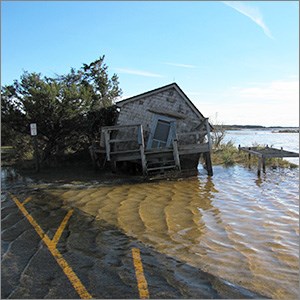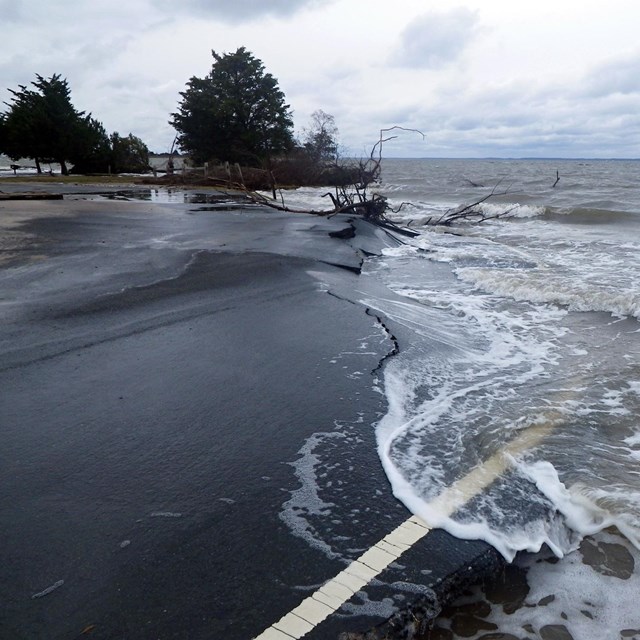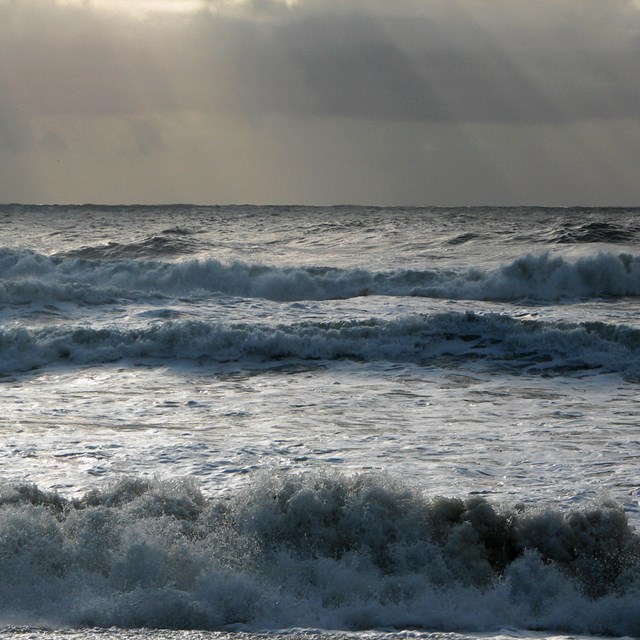
Scientists, data managers, decision-making specialists, and others within the NPS are working to improve understanding of climate and weather phenomena that is impacting or threatening to impact coastal parks, as well as provide resources and tools to guide park management decisions. Work being conducted within the NPS includes the development of park-specific plausible climate futures summaries based on changing temperature and precipitation. Another example is the Coastal Adaptation Strategies Handbook that summarizes NPS climate adaptation and key approaches, along with accompanying case studies to highlight examples across the NPS. Furthermore, the report and resulting data detailing the number of shoreline miles and waters acres for 88 coastal and Great Lakes parks provides managers with context and a more comprehensive understanding of the extent of park resources. On-going inventory and monitoring activities help track observed changes, such as shoreline position and salt marsh elevation, and understand both gradual trends and event-scale disturbances, such as from storms.
Other work is performed collaboratively with partners, including from academia and other Federal Agencies. For example, the Resist-Accept-Direct (RAD) Framework to guide decision-making was developed by the NPS, USGS, USFWS, and the Aldo Leopold Wilderness Research Institute. The NPS also supports park-specific Coastal Facilities Vulnerability Assessments to identify projected impacts of climate and other stressors on park resources and operations. Prior to those, assets exposed to 1 meter of sea level rise were assessed for 40 coastal parks. Additionally, the USGS Coastal Change Likelihood assessment framework was prepared in cooperation with NPS and synthesizes factors that drive coastal change in the next decade.
The NPS also leverages relevant work conducted by others, such as future sea level projections provided by the U.S. Sea Level Rise and Coastal Flood Hazard Scenarios and Tools Interagency Task Force and shown in the interactive NOAA Sea Level Rise Viewer (visit the NPS Sea Level Change webpage to learn more). The USGS Coastal Change Hazards Portal and Total Water Level and Coastal Change Forecast Viewer (USGS, NOAA, and the National Weather Service) also provide valuable information on coastal conditions.
Collectively, these data, guidance, and tools can help NPS managers better understand coastal resiliency and vulnerability of park resources and assets and provide confidence in taking effective and appropriate management actions that are compatible with the dynamic coastal environment. These actions include those that increase coastal resiliency and mitigate impacts (such as erosion), as well as actions that consider alternative options, including relocation or retreat.
Dig deeper:
-
 Coastal Adaptation Strategies Handbook
Coastal Adaptation Strategies HandbookView and download this management handbook focused on coastal adaptation planning
-
 Coastal Adaptation Case Studies
Coastal Adaptation Case StudiesThis handbook details 24 case studies of coastal adaptation occurring in national parks
-
 Sea Level Change
Sea Level ChangeExplore how changing sea levels will impact the cultural and natural resources of coastal national parks
-
 Coastal Vulnerability Assessments
Coastal Vulnerability AssessmentsClimate change impacts on sea level, storm surge, and shoreline erosion present unique hazards for coastal units of the NPS
Last updated: January 7, 2025
